
- HOME
- Cosmetic OEM Lab
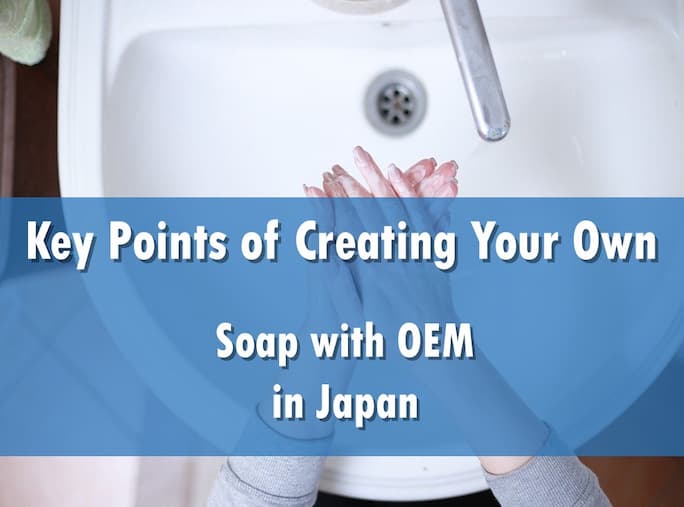
Soaps are not necessarily the first thing to come to mind when a company considers creating its own cosmetic product.
As a matter of fact, many people wouldn’t even consider them as cosmetic products.
However, soaps are the kind of products that anyone needs and buys on a regular basis.
Especially facial soaps and body soaps have been getting increasing attention in Japan and more and more products with skincare properties started hitting the shelves.
Read more on : Private Label Bath And Body Products
Private Label Products Skincare
In this article, we will explain different production methods and types of soaps and characteristic differences in soap making.
We will also cover the regular steps in OEM soap production as well as a few points we think are important when choosing an OEM company to work with.
Contents
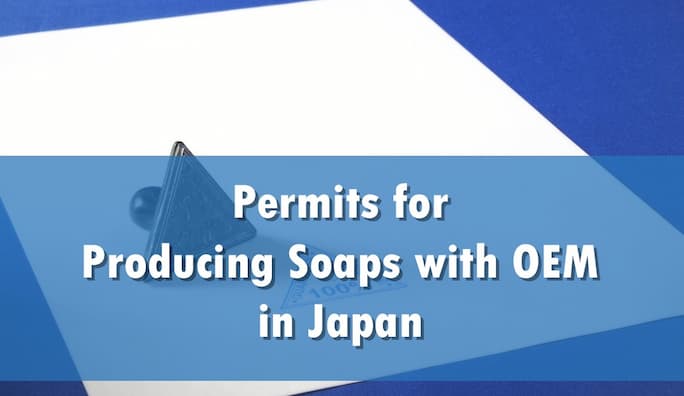
Soaps may be primarily for hygiene but they are categorized as cosmetics within Japan. For this reason, the process to produce and sell soaps is exactly the same as other cosmetics products.
This brings us to the required permits. In Japan, a dedicated license is required for selling cosmetics. However, the system allows the OEM company to bear the responsibility, enabling anyone to create their own product and market them without requiring any permits or licenses.
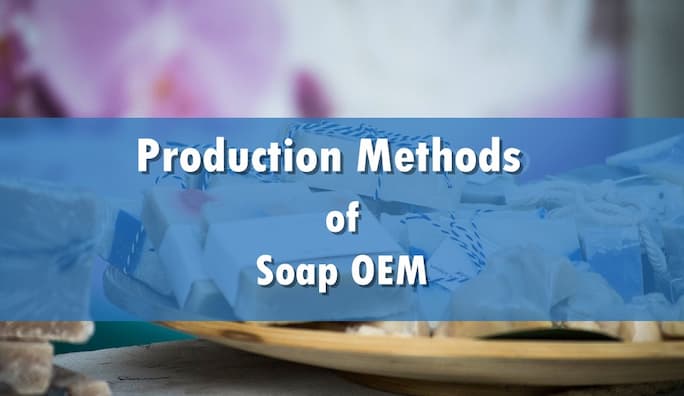
There are 3 main methods of producing soaps in OEM:
& nbsp;
In this method, there is no artificial heating is used. It is basically made with the heat of the chemical reaction between the oil itself and caustic soda (sodium hydroxide).
Since the soap is formed at low temperatures without the application of heat, high-spec ingredients are expected to keep their properties without any loss.
Some ingredients such as vegetable oils, vegetable extracts, and herbs can be sensitive to heat, resulting in deformation when heat is applied.
The cold press method is ideal for soaps that are rich in this sort of ingredients. In addition, soaps made with the cold-press method tend to hold a large amount of glycerin and vegetable oils, and fats make them quite moisturizing.
In this method, vegetable oils and caustic soda (sodium hydroxide) are put in a large kettle, with heat rising from firewood being slowly cooked for about 3 days.
This is a manufacturing method in which the differences in product characteristics are the most noticeable since it requires traditional techniques unique to that company, such as blending of the ingredients and craftsmanship during the cooking process.
This method also allows the moisturizing ingredients remain whole in the formula, resulting in a moist end product.
In the manufacturing method, the soap material is poured into frames where they are cooled with time. Since this method requires a certain amount of manual labor and a number of procedures, production costs tend to go high.
However, this method also allows the base materials such as vegetable oils to be suppressed to 60-70% of the formula, it is possible to mix more original ingredients compared to the other 2 methods.
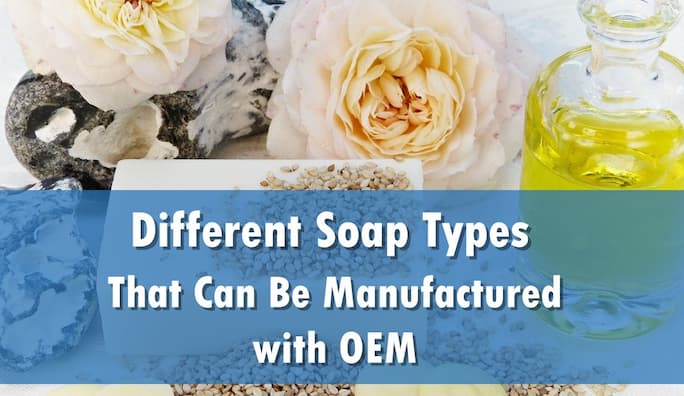
There are many different types of soaps that can be manufactured via OEM. We will introduce the 3 types of soap OEM that we frequently receive inquiries on.
These soaps are made from natural ingredients such as plant-derived oils and herbs. They are preferred for the absence of ingredients that are likely to irritate sensitive skin, such as salts and synthetic surfactants.
However, getting an organic certification can be quite a hassle in Japan and cost a lot of money.
This may be strange for western parts of the world, however, horse oil is generally used as a cosmetic ingredient in Asian countries like China and Japan.
Horse oil is derived from horse meat that is near the mane area. Horse oil is said to be similar to human sebum and is known for its high moisturizing properties.
These are simply soaps that come out “transparent”. Materials and salts used in these soaps are different than regular soaps. As they have a clear appearance and a different texture, they are quite popular in the OEM scene.
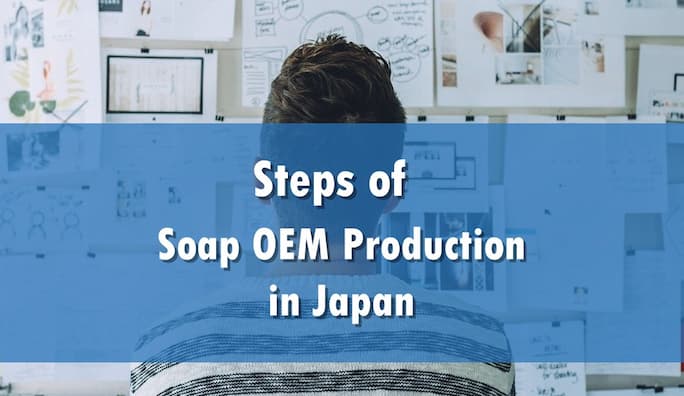
The process of producing your original OEM soap product in Japan is no different than in other countries, however, the process may be longer than one would expect.
Here are the 5 general steps you would have to go through:
& nbsp;
This is the step where the OEM company and the client discuss the details regarding the project.
We recommend you talk to as many companies as possible to make it easier to find the best possible match for you.
Once both parties agree on a concept, it is time to do a prototype to see how the product comes out before proceeding any further.
It is common that a client goes through 3-5 prototypes before agreeing on the final formulation. This process may take up to 2 weeks per prototype.
After the formulation is formalized and the prototype production stage is over, the OEM company will submit a final quotation based on the ingredients and concentrations.
If the price is right, both parties sign off an agreement and the client places a purchase order.
Once the payment is confirmed, the production process takes a start. The length of this period varies from product to product, however, 2-4 months is expected in the case of a Japanese manufacturer.
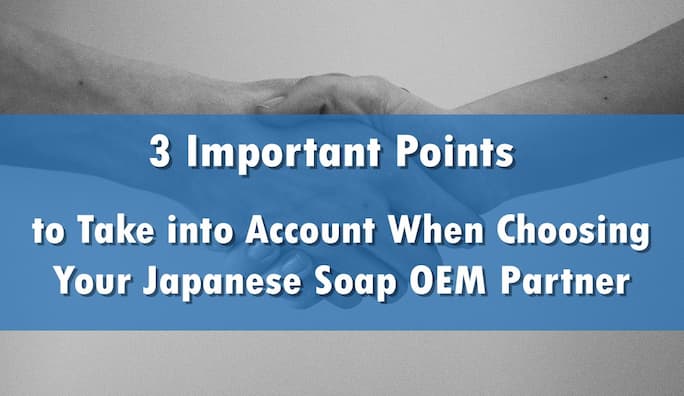
We believe the following are the 3 most important points to focus on when choosing a Japanese OEM soap manufacturer.
Minimum order quantity (MOQ) is what we mostly tend to consider. However, it is very common that the price gets way too high for the business to be sustainable in low quantities.
We believe you should ask the manufacturer what is the lowest quantity that the prices get competitive. This is often referred to as “economy quantity” in Japan.
Some companies tend to operate with a very low selection of ingredients as part of their business model.
Even though they are technically capable of manufacturing high-quality goods, this makes them difficult to work with smaller quantities.
We think it is better to work with an OEM company that has a large number of ingredients. These companies are easier and more economical to work with for low quantity production.
This goes without saying but the price is probably the most important aspect for most clients.
As product development takes time and effort for both parties, we believe you let the manufacturer know your budget and find out if they are a good match for you before proceeding further.

In this article, we tried to explain different production methods and types of soaps and characteristic differences in soap making.
We also covered the regular steps in OEM soap production as well as a few points we think are important when choosing an OEM company to work with ..
If you are considering creating your own soaps or any other cosmetic product in Japan, please feel free to contact us with any questions you may have.
For further information, please contact us.